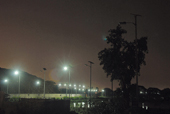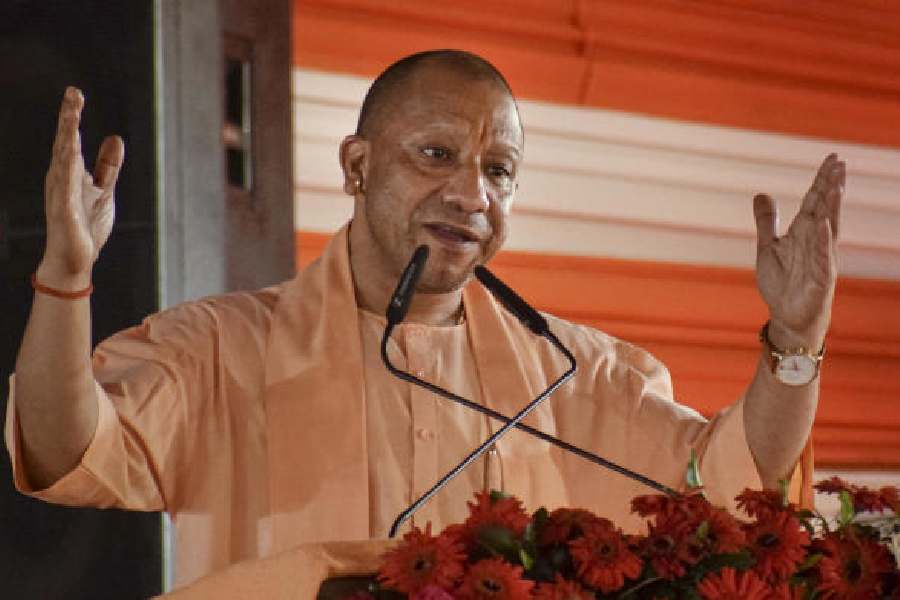 |
| Lamps powered by solar cells at Khanaberia often do not light up at night. Pictures by Sanjoy Chattopadhyaya |
The pilot project for illuminating city streets with solar lights, undertaken by the Calcutta Municipal Corporation (CMC) in Khanaberia, has proved a non-starter with most of the lamp posts powered by the sun failing to light up after dark.
However, a set of solar street lamps on a nearby EM Bypass stretch, sponsored by CESC and maintained by the West Bengal Renewable Energy Development Agency (WBREDA), is fulfilling its role, illuminating the traffic-heavy zone each evening.
The CMC, in collaboration with WBREDA, had undertaken the pilot project more than two years ago by setting up solar-powered street lights on a 1km stretch of Khanaberia, in the backyard of Dhapa, spending Rs 34 lakh.
The result so far has been far from encouraging. Hardly 40 of the 100 lamp posts light up at night and that too not regularly.
If the sky is overcast during the day, the lamps do not provide illumination. If the outgrowth of trees prevents sunlight from reaching the solar panels, the lamps remain shrouded in darkness.
 |
| Solar lamps sponsored by CESC and maintained by WBREDA light up a stretch on the EM Bypass |
The experience has made civic engineers sceptical about the future of solar lights in the city, said Susil Kumar Sharma, who was the mayoral council member (lighting) in the outgoing civic board.
According to civic engineers, solar-powered street lights are costly and not as powerful as conventional lamps.
“We chose Khanaberia in ward 58 for the pilot project since it was outside the command area of both the state electricity board and CESC,” said Sharma.
“Solar-powered street lights are unfit for a city like Calcutta where trees are abundant and the sky remains overcast for about six months in a year,” said an engineer in the lighting department.
It is expensive too, he added, since solar lamp posts need to be installed eight metres apart. Conventional lamp posts can be installed 30 metres apart.
Instead of halogen lamps, 18-watt compact fluorescent lamps (CFL) are used in the solar lamp posts. These light up only if the day has been sunny throughout.
The other disadvantage of solar lamps is that the batteries need maintenance every three months.
The total running cost of a halogen lamp is Rs 30,000, Rs 4,000 less than that of a solar lamp. Moreover, while two halogen lamps light up 30 metres of lateral distance, two solar lamps can only illuminate up to eight metres.
“These are funny lights. They light up according to their whims. We carry torch at night on the road,” said Malati Sardar, a resident of Khanaberia.
“There are no electric lights in the area. These are all solar-powered lights but they do not light up regularly. There are over a hundred lamp posts but hardly 30 to 35 glow at night. During rainy season, when we need street lights the most, they remain dark,” said Khokan Naskar, another resident.
WBREDA, the agency that has implemented solar lighting on the EM Bypass and in Jadavpur and Indian Botanic Garden, apart from Khanaberia, however, stresses that with proper maintenance solar lights could work well.
“We have erected 200 solar lamp posts all over the city at a total cost of Rs 1 crore,” said S.P. Gon Chowdhury of WBREDA. “The ones at Khanaberia, too, have been installed by us. It is true that solar lights are expensive but they are healthier than halogen lamps,” he added.
About maintenance, Gon Chowdhury said, solar batteries need to be cleaned and their water level checked every three months.










